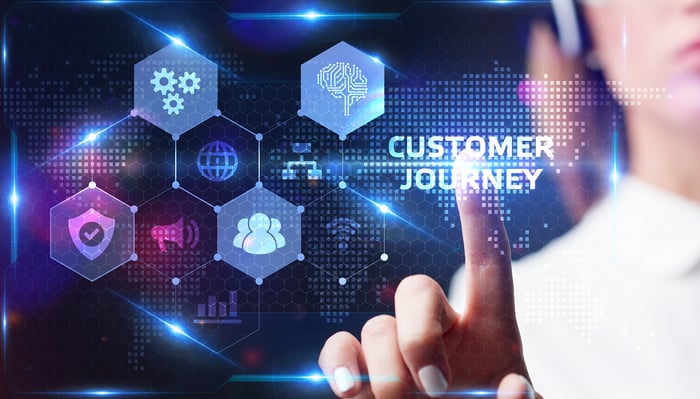On a global scale, the tourism industry impacts over 284 million jobs. These jobs comprise an enormous sector of the global economy, with these organizations focusing on providing customers with outstanding experiences. Rather than selling their customers and clients particular products to fulfill pain points, these businesses instead focus on providing customers with a promised experience. It is through these emotion-driven interactions that customers determine if their needs have been met and their view of this particular business.
What is service design within Hospitality & Tourism?
Within this sector, therefore, the idea of service design has a tremendous impact. Through service design, brands work to understand how the people and processes that they employ will work together to create an outstanding experience that customers will appreciate and hopefully pass along to others to build the brand’s reputation and consumer base.
This design takes a multi-faceted look at the customer experience. It explores the various interactions that customers have with the business at different points. For example, a restaurant would consider the steps a customer takes from reserving a table for dinner to finishing the meal and paying at the end of the interaction. Each step of the way, the customer looks to have a particular experience.
Brands that thrive use a service design that empowers them to look at the customer experience from end to end, allowing them to create the processes needed to exceed their expectations and achieve success.
As brands begin to understand the importance of quality service design and what it can do to help their own business development, they also begin to grasp the benefits that using these models can have for their business planning. Here are the core benefits that should motivate you and your organization to turn to service design as the strategy that will help you and your organization excel.
How does service design impact the businesses themselves?
Within the business, gaps often arise between the business model and the service model. Businesses may consider carefully the services they want to provide and how they interact with customers. However, the internal processes of the business may not receive the same consideration and may not as tightly align with the services the company works towards.
This can create a disconnect between those providing the services and problems that arise on the backend. Employees may experience greater dissatisfaction and more inefficiencies can arise as these processes are not given the same amount of attention.
Service design forces businesses to uncover these potential shortcomings by taking a holistic look at the customer experience. It can encourage businesses to better understand how the service they provide directly impacts the internal processes that the employees take care of. Organizations then become primed to make important changes that will allow for better alignment between these priorities. This allows the organization to do a better job of creating a pleasing customer experience that their patrons will appreciate.
At its core, this service design will look at:
- The fit for the organization. It will examine the practicality of the organization adopting the priorities proposed by the service design and whether they can be implemented with the resources and environment the business has available.
- The desirability of the changes. It will see how any proposed changes designed for the customers will appeal to the target population as well as if they will have a positive impact on the organization.
Through this careful examination, hospitality brands will have the chance to unearth many potential problems within their business operations.
- They will uncover conflicts or redundancies in how internal processes are handled. This can improve efficiency and reduce the frustrations employees might feel, helping them provide better service,
- They can create clean, clear workflows among all the people who contribute to the customer experience at each step. This will help the business run smoother.
- They will help to foster relationships and conversations between all of those involved in the customer experience. Rather than a separation between those who work internally and those in customer-facing roles, all of the employees will understand their inherent collaboration for the customer touchpoints that they directly impact.
How can service design be implemented effectively?
A quality service design will take into account staff at all levels of the industry. The goals set forth within service design will impact the interactions that customers have with the business every step of the way. From their first interaction with the business to the moment when they conclude their stay, the people and processes that the customer encounters should exceed their expectations This means that everyone within the business must understand why and how they are to adjust their interactions with clients.
The service design should also help to bring together all of the staff members by helping them to understand their roles in customer care. Creating smoother workflows can only be accomplished when everyone understands the necessary changes.
At the same time, a quality service design must remain practical and fully capable of being implemented. It needs to take into account:
- The people involved.
Know who will be involved with each interaction that customers will have throughout their stay. Articulate how to help them meet their goals and move efficiently, as well as their role in making the customers happy. - The props and environment.
The service design must also consider what would be needed to create an outstanding service design. For example, if the restaurant or hotel pledges to use naturally sourced, organic ingredients to create higher-quality food, it needs to consider the farmers and producers that will make the level of dedication and service possible. - The workflows and processes.
Your design also needs to take into account how you plan to put all of these new designs to work. Consider each stage of the design and the people involved and how it will impact the customer. Remember that both the front end and the backend impact the customer experience. Do not neglect what happens behind-the-scenes just because a customer might not see it directly.
 With a service design that encompasses such a holistic look at how your hospitality business runs and performs, it becomes easy to see how this process of outlining customer interactions and articulating how to improve them can then elevate the overall function of the business. Rather than focus on just one small part of what makes a particular hospitality business successful, using a service design model can help each organization look at the big picture and create a plan that will encompass everything that their customers want to see.
With a service design that encompasses such a holistic look at how your hospitality business runs and performs, it becomes easy to see how this process of outlining customer interactions and articulating how to improve them can then elevate the overall function of the business. Rather than focus on just one small part of what makes a particular hospitality business successful, using a service design model can help each organization look at the big picture and create a plan that will encompass everything that their customers want to see.
In the hospitality industry, brands need to find ways to help themselves stand out from the others in their niche. They need to uncover models that will allow them to better understand their customers and create experiences that will exceed their expectations. The benefits of service design, which look at the entire customer experience and how it is impacted by different facets of the business, empower organizations to do just that.
Consider how the benefits of using the service design guidelines can help you create a customer experience that improves their interactions with your business and creates for you a place at the front of your industry.




